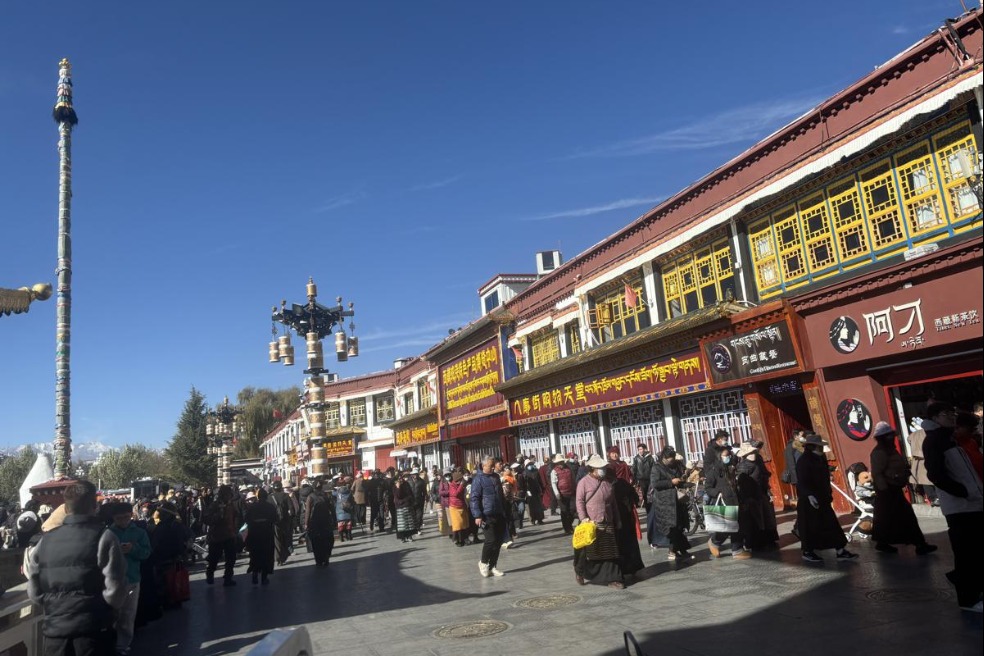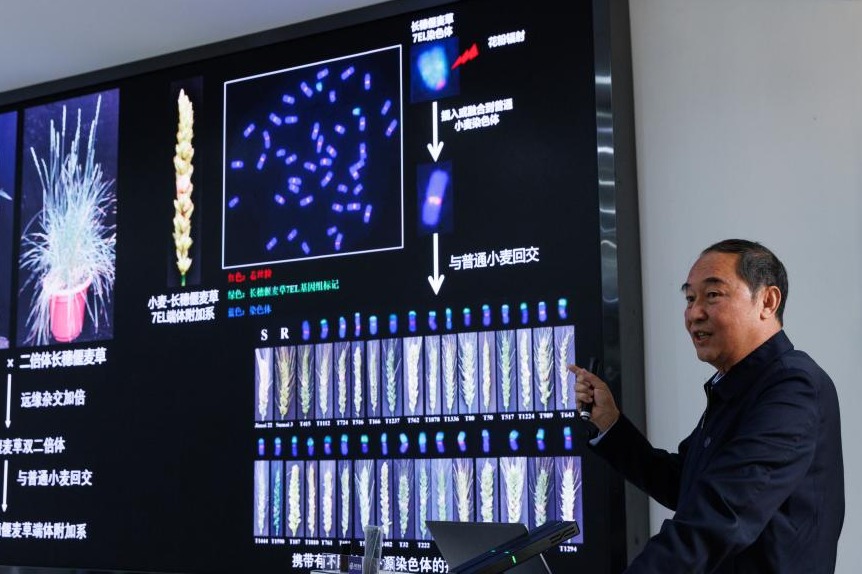National storehouse of textual treasures
Archives of precious work provide fertile resources to examine China's rich culture, Yang Yang reports.

On May 28, Reflection of the Golden Age, an exhibition of paintings from the Song Dynasty (960-1279), opened in the China Cultural Center in Singapore. It is the sixth stop of a global exhibition tour that started in November 2022 in London.
The exhibition presents about 100 high-definition print replicas of fine paintings from the dynasty, which are grouped into three categories — landscape, figures and flowers and birds — and represent the summit of Chinese ancient painting. In August, the exhibition will arrive in Denmark.
The exhibition is a part of the compiling of the book, A Comprehensive Collection of Ancient Chinese Paintings, that began in 2005. Beginning with the Song Dynasty, the project over 18 years grew to encompass more works from other dynasties such as the Tang (618-907), Yuan (1271-1368), Ming (1368-1644), and Qing (1644-1911). In total, the 60-volume collection catalogs 12,405 classic paintings on paper, silk or linen from 263 museums, galleries and other culture institutions around the world.
A Comprehensive Collection of Ancient Chinese Paintings has now taken its place among the 30,000 volumes of fine publications produced after the founding of the People's Republic of China in 1949 that sit in the 44 huge bookcases of the national study in the Wenhua Hall of the China National Archives of Publications and Culture.
On the afternoon of June 1, in his visit to the China National Archives of Publications and Culture, when President Xi Jinping walked into the national study and examined the bookcases, a set of A Complete Collection of Paintings of the Song Dynasty drew his attention.
In 2005, as Secretary of the CPC Zhejiang Provincial Committee, Xi approved the project in person, and had been supporting it since then.
Looking at the set, Xi said, "This was a project under the supervision of Zhang Xi from Zhejiang University. I was working in Zhejiang at that time. First it was A Complete Collection of Paintings of the Song Dynasty, then the project expanded to be A Comprehensive Collection of Ancient Chinese Paintings. It was not only a local project in Zhejiang, but had extensive cooperation with institutions from home and abroad".
Chu Di, vice-president of the China Federation of Literary and Art Circles, said in a previous interview, that A Comprehensive Collection of Ancient Chinese Paintings presents a relatively complete picture of the evolutionary process of Chinese ancient painting art, and profoundly displays the cultural texture of the Chinese nation.
As the biggest collection of images of Chinese ancient paintings reproduced in high quality, the book also provides great materials for art students.
To uphold tradition and seek innovation, we need to further explore the elements in traditional culture and innovatively employ them, so the book is very important for the inheritance and development of Chinese painting art, says Zhang Lichen, professor from the Central Academy of Fine Arts.
The book will also be extremely helpful for the research and rewriting of Chinese art history, says Fan Di'an, president of the Central Academy of Fine Arts.
For example, it collects nearly 5,000 paintings related to Buddhism from different historical periods, so it opens a new vision for the study of Buddhism in China, says He Huanhuan, professor of philosophy from Zhejiang University.
A Complete Collection of Paintings of the Song Dynasty is just one of the examples housed in the China National Archives of Publications and Culture that display the importance of the institution, which is built to preserve and carry forward the edition resources of China as a gene bank for the seeds of Chinese civilization.
Apart from books, the collections of the China National Archives of Publications and Culture also include a large range of vehicles for recording the historical progress of a culture — all called as editions — such as inscribed bronzeware, newspapers, tapes, food vouchers, manuscripts, genealogies, chronologies, online fiction, online games, digital music and even the first line of the code created to check people's COVID-19 test results.
Inaugurated in July 2022, the China National Archives of Publications and Culture is made up of the headquarters Wenhan Ge (pavilion) in Beijing and three branches — Wenji Ge in Xi'an, Northwest China's Shaanxi province, Wenrun Ge in Hangzhou, East China's Zhejiang province, and Wenqin Ge in Guangzhou, South China's Guangdong province.
Wenji Ge, combining the cultural characteristics of western China, displays the civilization of the Silk Road. Wenqin Ge also highlights key aspects of Chinese culture, as well as the distinctive Lingnan (roughly South China) style. What lies at the heart of the Wenrun Ge's collection is the Song Dynasty culture, in addition to the focus on archival materials from the area of Jiangnan (the south of the Yangtze River).
Sitting at the foot of the Yanshan Mountains in Beijing's Changping district, Wenhan Ge is about 40 kilometers from downtown Beijing. Viewing the headquarters from above shows that the whole area consists of three levels of compounds, which follow traditional Chinese architectural aesthetics.
The first compound has the Wenxing Building as the main structure, followed by a courtyard and the national study; Wenhua Hall is on the second level and the Wenhan Ge is located on the third. Now, it is home to more than 25 million copies and editions of various publications and other materials.
"Our collection should be able to represent traditional Chinese culture, revolutionary culture and advanced socialist culture, including various editions from home and abroad in different historical periods that carry the imprints of Chinese civilization," says Liu Chengyong, director of the China National Archives of Publications and Culture.
"By collecting and exhibiting the editions, we try to explore their historical and cultural value, tell stories about the knowledge and functions related to them, display the historical texture and civilizational achievements reflected in them and present the cultural spirit and national character carried by them."
They are vivid evidence of Chinese national civilization, socialist history, and the history of the Communist Party of China, he says.
This idea is implemented well in the exhibitions in the China National Archives of Publications and Culture.
In the Wenxing Building, the exhibition, The Craftsmanship of Printing, employs 100 precious artifacts to systematically display the developmental process of printing techniques in China, from a book's layout, to manufacture, design and restoration. The showcases contain many precious ancient books.
One of them is a copy of a Tangut-script translation of Tibetan Buddhist texts. It is the earliest existing printed book using the techniques of wooden movable-type printing, created in the 13th century.
Comprising nine volumes, the book, excavated in the Ningxia Hui autonomous region in 1991, provides important evidence for the invention of movable-type printing in China.
In Wenhua Hall, an exhibition of fine publications and special editions in contemporary China presents different editions of the Xinhua Dictionary, nianhua (New Year pictures or paintings), picture-storybooks and posters created after the founding of the PRC.
On the second floor of Wenhan Ge is Inception of Chinese Civilization: Exhibition of Ancient Chinese Publications and Cultural Articles.
Categorized into 13 subjects, including politics, economics, philosophy, geography, literature, historical studies, and science and technology, more than 400 precious exhibits present the historical origins and development process of traditional Chinese culture.
A special exhibit, zun of He, a piece of bronzeware from the Western Zhou Dynasty (c. 11th century-771 BC), is inscribed with early Chinese characters that spell out zhongguo (China), the earliest physical record of the term.
Another star exhibit is a book of rubbings of calligraphy collected by Su Shi, a great poet and calligrapher in the Song Dynasty.
Consisting of over 60 calligraphy works and letters by Su, this rare copy, created over 850 years ago, is highly precious and valuable.
In the copy of Shi Liuqiu Lu (Log of the Mission to the Ryukyu Islands) from the Ming Dynasty is included an early official record documenting the Diaoyu Islands.
On the third floor of Wenhan Ge is the Light of Truth: Classic Archives Exhibition of Marxism Localization and Modernization in China, which presents more than 2,000 copies of classic books and objects that are grouped into four parts.
The exhibition shows the classic books by Karl Marx and Vladimir Lenin, including the first volume of the German-language Das Kapital published in 1867, whose first print run was only 1,000 copies, and more than 300 versions of The Communist Manifesto in many different languages, and the multilingual, multivolume Xi Jinping: The Governance of China.
To store these precious publication resources, the China National Archives of Publications and Culture has built a library cave in China that meets the corresponding requirements of temperature and humidity, as well as green architecture.
In the No 1 library of Lantai Cave are the woodblocks used to print Tripitaka, three collections of Buddhist canon of scriptures, in the Han, Tibetan, Mongolian and Manchu ethnic languages, which are made of first-class pear wood and red birch. They have lasted hundreds of years.
In the No 2 library is an authentic version of Siku Quanshu (The Compilation of the Complete Library in Four Branches of Literature), as well as the replicas of photocopied versions.
Apart from functions of collecting, surveying, preserving, exhibiting and promoting editions, the China National Archives of Publications and Culture is also mandated to facilitate related research and exchanges.
"We welcome experts and scholars specializing in research on editions from around the world, Sinologists in particular, to the China National Archives of Publications and Culture for exchanges and research, especially about cutting-edge topics and comparisons between editions in Chinese and foreign languages," Liu says.
"The China National Archives of Publications and Culture is a landmark cultural project of the new era," he says.
"It will preserve all kinds of resources that have important historical and cultural value. The goal is to continue the chain of transmission of Chinese culture, strengthen cultural confidence, display China's national image and promote communication between civilizations."
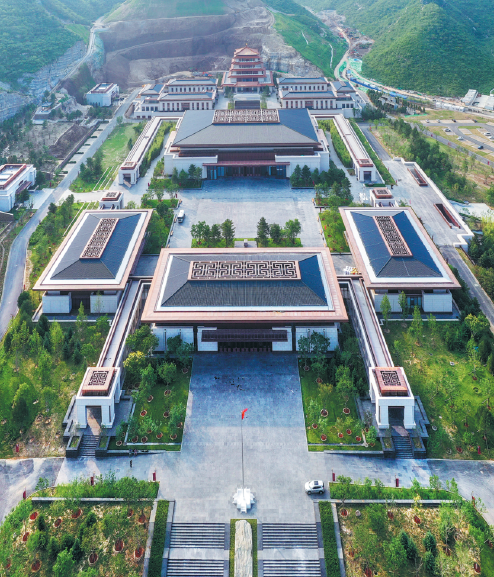

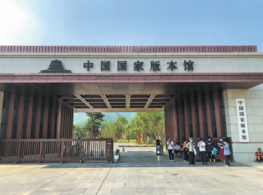

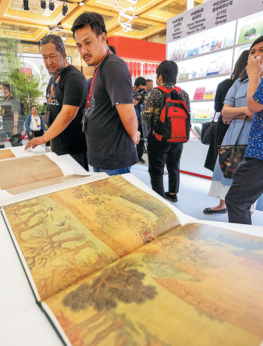
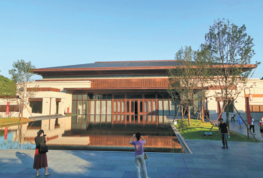
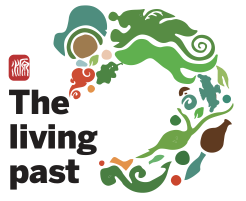
Today's Top News
- Judicial reform critical for modernizing governance
- Effective use of investment emphasized
- China's shuttle diplomacy strives to reach ceasefire
- Nanjing Museum's handling of donated art, relics being probed
- Key role of central SOEs emphasized
- New travel program hailed as 'milestone'



















